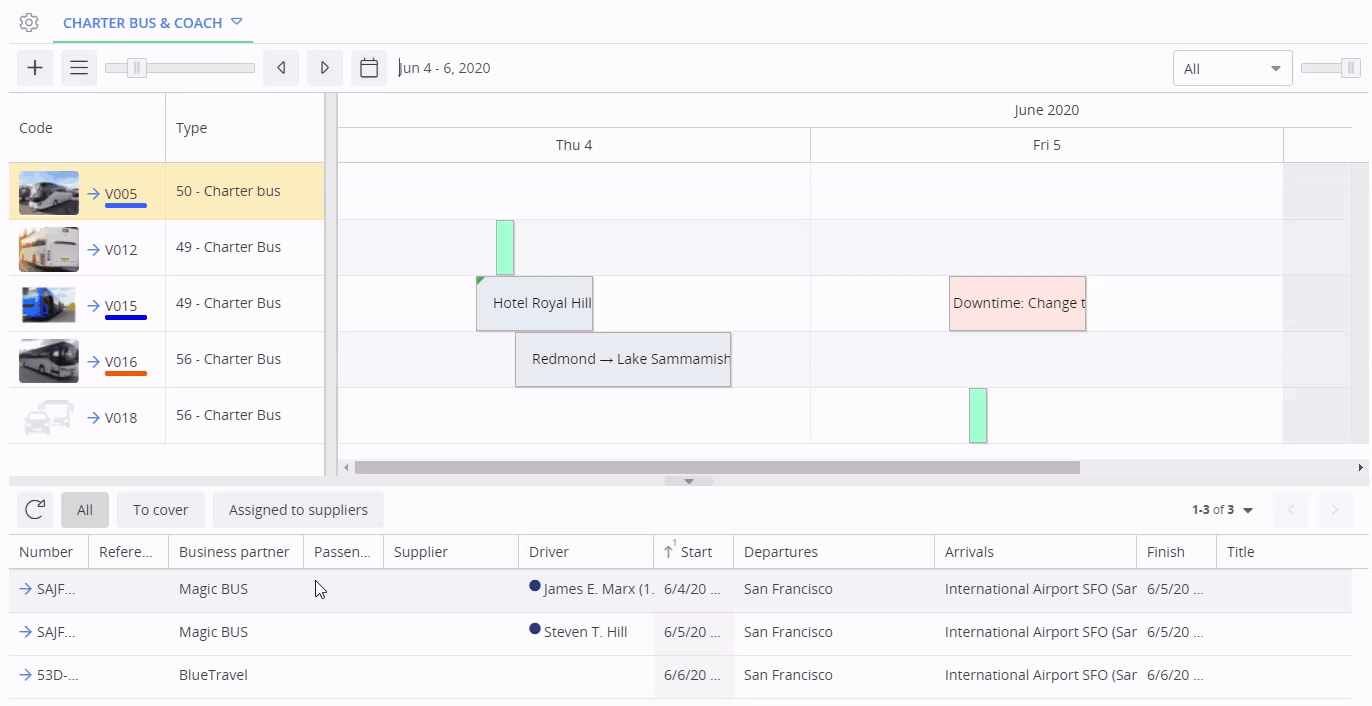Customer Spotlight: Sengerio

About Sengerio
Sengerio is part of Allbus and was founded by Michele Zaccaria who, from his previous role in a transport company, developed the idea to create a system with all the functionality that is needed within a coach hire company and coach services in today’s world. Sengerio offers a cloud-based fleet management solution suitable for bus charters, limo companies and travel agencies. Its key features include booking, scheduling, managing vehicles and drivers, invoicing, communication, customer service and reports.
How the Sengerio Scheduler is giving its users the competitive edge
On the surface, scheduling is one of the many other tasks that keep transport operators ticking. But as we begin to unpack the components of what an efficient scheduling system looks like, we begin to see how it can be a strategic tool. The most efficient scheduling systems allow operators to keep a tight grip on all their resources and can easily juggle them to optimize their services. By doing this, operators can understand which resource is best for which service and, ultimately, save a lot of time and money during this process.
The team at Sengerio wanted to develop a scheduler that puts the powers of service optimization at the fingertips of the user.
We wanted a scheduler that ticks all the boxes when it comes to resource allocation but lets the user select the variables they want to work more efficiently. A scheduler that easily integrates with the other areas of Sengerio while maintaining an easy-to-use interface so our users can easily navigate the platform.
In this article, learn about the development of the Sengerio Scheduler and how it continues to optimize the service scheduling of its users.

Why Did We Choose the Bryntum Scheduler?
When it comes to scheduling services, transport companies need to assign the most suitable resources to cover each shift— such as the vehicle and driver.
But to do this, many companies still rely on outdated methods of organizing their services.
For example, a company could opt for using a spreadsheet, or even a giant whiteboard, to allocate the necessary resources to their corresponding service. These methods are often time-consuming and liable to mistakes, not to mention their lack of flexibility if anything needs to be modified.
On top of that, the more services a company has to arrange, the more strain is put on the management system. Consequently, the resulting system is often strained and fragmented.
To optimize resource scheduling, the team at Sengerio wanted to pull in the entire process and provide a unique interface that allowed transport companies to visualize the services and easily allocate their resources.
As a result, the complex process of resource allocation would be made much simpler and easier to manage, requiring much less time and effort while eliminating any room for error.
To achieve this, our solution was the Scheduler by Bryntum as it provides the Sengerio Scheduler interface with a comprehensive panorama of all the important information and streamlines the scheduling and resource allocation process for users
This includes having the duration of each service visually represented as segments within the scheduler so that users can immediately understand the availability of their resources and calculate which would be the most appropriate to allocate for other services.
The Bryntum Scheduler ticks all the boxes for our development team that wanted more variables and flexibility to ultimately let Sengerio users to competently navigate the scheduler effortlessly.
As well as the customizable visual features the Bryntum Scheduler permits, it also allows users to drag services to their respective resources to complete the allocation process. We knew this interactive scheduling element would play a vital role in optimizing the scheduling process for transport companies.
Implementing Bryntum Scheduler in Sengerio
After Bryntum provided the Sengerio development team with the core code, implementing the Bryntum Scheduler was an easy step.


The majority of the implementation process consisted of our team calculating which would be the best way to use the variables to improve the UI.
While the core code lays out the foundation for the scheduler, we have ample opportunities to personalize the scheduler according to our requirements. The first aspect was understanding which time frames we should include making the scheduler more user-friendly. This is thanks to Bryntum Scheduler’s feature that lets users toggle through different time frames that may best suit their service hours. In Sengerio, we introduced five time frames ranging from a day, 3 days, a week, a fortnight, and a solar month.
Next, we personalized the scheduler so that the services that need assigning resources are located below the scheduler. The resources (either vehicles or drivers) are located to the left of the scheduler where users can recognize each resource either by their image, code, and typology. We organized the scheduler in such a way that the user must merely drag the service that needs assigning onto the row of the resource that should be assigned to that service.
By clicking on an unassigned service, the scheduler presents the total amount of time that service would occupy on its timeline. This is a powerful feature that permits users to instantly recognize which of their resources are available or occupied.
Below is an example of an unassigned service (underneath) being associated with a vehicle (on the left) to complete the allocation process.

Once assigned, a segment, whose length corresponds with the total service time, appears on the scheduler. By default, these segments contain the pick-up and drop-off information of that service. However, this characteristic is completely modifiable, even on the users’ end, that may want to change the information presented or associate a color with a segment for extra clarity.
The result
We have created two different schedulers; one for assigning vehicles directly to services and another for drivers. The mechanism remains the same in both cases, but having two schedulers supports the flexibility for the users who may prefer to organize their services according to their driver availability.
The possibility of matching a color with a service vastly improves the simplicity of differentiating services, especially for those busy days.

Summing up
Bryntum Scheduler plays a central role in the success of Sengerio Scheduler by streamlining the organization of transport services.
Now, users are able to easily navigate the scheduler to have a comprehensive overview of their services and optimize how they assign their resources.
On top of that, users are free to personalize their scheduler to meet their preferences when it comes to managing their resources, making the interface much more user-friendly.